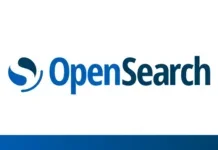In 2019, the Linux Foundation added the Joint Development Foundation (JDF) to its family of project communities to build upon its existing body of specification work. The addition of JDF to the Linux Foundation brought with it a unique but straightforward process that allows new projects to form quickly and collaborate under a standardized set of governance principles that ensure the resulting specification can be implemented with open source licenses.
In 2021, the Linux Foundation has steadily increased interest and new project formation under Linux Foundation Standards (LFS) across various technical disciplines. We have also seen an acceleration of members and contributions in our established projects.
“2021 can be characterized as a year of progress for LF Standards and JDF. We saw solid operational improvements in our traditional specification efforts, steady uptake on the Community Specification program, and some new wins with the acceptance of the SPDX specification by JTC1. The ability to quickly wrap a specification project with an open source project using well-established governance and standards-making processes seems to have fulfilled an unmet need in our industry,” said Seth Newberry, the General Manager of JDF.
“We reached out to the Linux Foundation because we wanted to create the Coalition for Content Provenance and Authenticity (C2PA.org) under a simple but formal project structure. Given our project goals of creating technical specifications for countering misleading information online through digital provenance, it was critical to get up and running quickly and with minimal complexity” said Andy Parsons of Adobe Systems.
“The JDF program is great for us. It has a simple set of templates we used to ensure we employ good standards practices, and it was very quick to set up the legal entity and the project. We’ve also enjoyed excellent support from an experienced team at the Linux Foundation since its inception. We achieved a draft release of the specification in about 8 months, which may be a record in standards-setting. We could not have done this without the LF and JDF.”
Looking ahead, LF Standards expects to become more active and visible in the standards-setting community, especially leveraging the Community Specification as an entry point for new projects that need the established governance and process structure of a traditional standards project but with the low/no-cost project onramp. LF Standards will also begin to fully adapt the investment in project onboarding and reporting tools being developed in LFX, allowing the projects to bring on new contributors quickly, with low overhead, and gain insights about the engagement with the contributors and the progress of the specifications.
An example of the Linux Foundation’s increased standardization efforts has been The Coalition for Content Provenance and Authenticity (C2PA), which addresses the prevalence of misleading information online through the development of technical standards for certifying the source and history (or provenance) of media content. C2PA is a Joint Development Foundation project, formed through an alliance between Adobe, Arm, Intel, Microsoft, and Truepic.
C2PA unifies the efforts of the Adobe-led Content Authenticity Initiative (CAI) which focuses on systems to provide context and history for digital media, and Project Origin, a Microsoft- and BBC-led initiative that tackles disinformation in the digital news ecosystem. C2PA has been active in discussions with legislators, educating policymakers about technical and industry issues surrounding malicious synthetic media.
A public draft of the C2PA specification is currently available for review here.
The most significant improvement to the Linux Foundation Standards offerings is the breadth of options available to companies who want to create technical collaborations that can result in an important public specification. Traditional standards-making organizations are typically technology-specific, created for a specific purpose, and have highly customized bylaws that take time to develop, review and sustain with a bespoke legal entity.
Linux Foundation Standards have a harmonized set of standardized project charters with compatible governance and process rules that allow contributors to germinate an idea using the free repository-based Community Specification. This can ultimately be matriculated to a compatible traditional-mode standards effort with a formal corporate structure that can hold assets in common and raise funds. All of these efforts can ultimately be submitted to the JTC1/ISO/IEC for consideration and adoption as an internationally recognized standard using the Publicly Available Specification (PAS) process. Additionally, in the spirit of expanding its industry relationships, JDF projects have added new Liaison agreements with standards bodies such as the IPTC, ETSI, SMPTE, and others.
These standardization efforts are made possible by the Joint Development Foundation. To learn how your organization can get involved and form a project, click here
To learn more about and get involved with C2PA, click here
The post Going Beyond Source Code in 2021: Joint Development Foundation and Open Standards Efforts appeared first on Linux Foundation.


